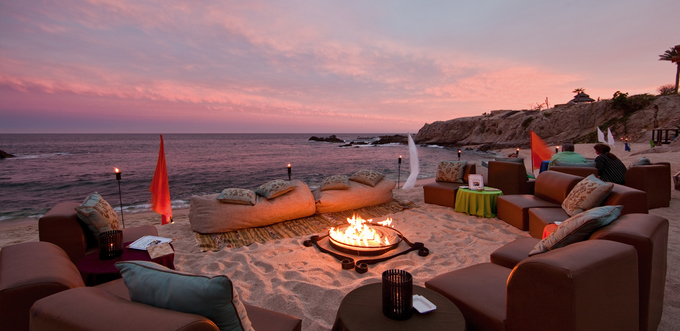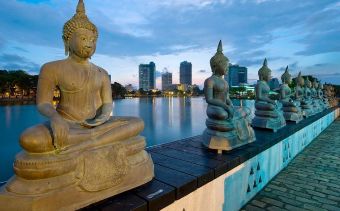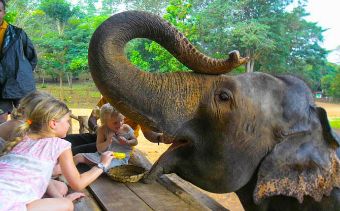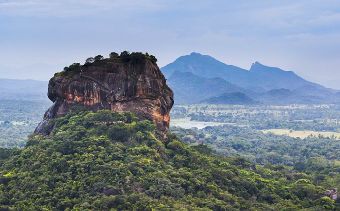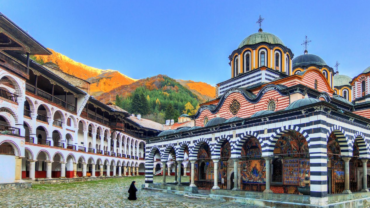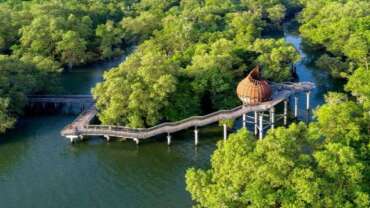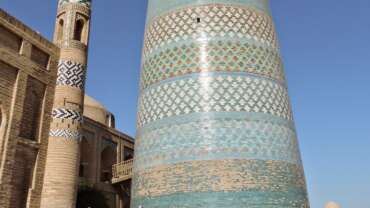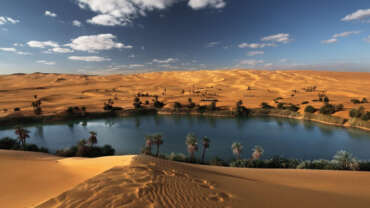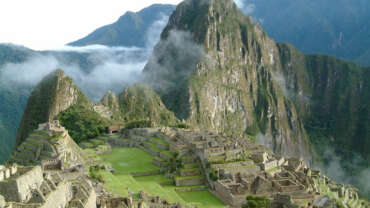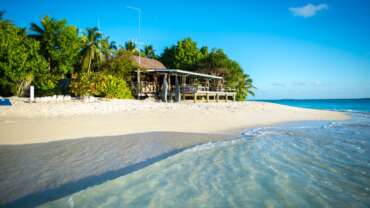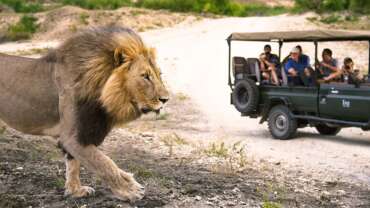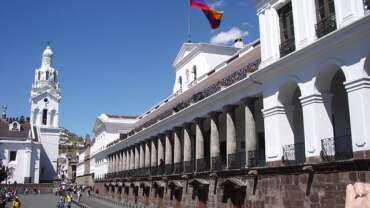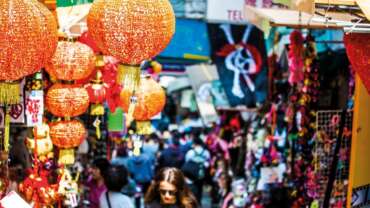MICE in Sri Lanka
MICE Tourism Sri Lanka MICE arrivals have been increasing in Sri Lanka constantly and they will continue to grow. Around 11 percent of the total visitors into Sri Lanka represent the MICE (Meeting Incentive Convention Exhibition) segment. Sri Lanka has a long tradition of hosting major MICE and business meetings events. The country offers facilities for corporate training programs and natural settings for exclusive incentives.
Sri Lanka’s strength lies in diversity of attractions and locations available in this country, not easily matched by any other MICE destination. The diversity is vast and all within easy reach and a short drive; from beaches, to culture, heritage, wildlife and mountains.
Sri Lanka offers a modern infrastructure and facilities to organize international conferences and events of all sizes. In Colombo there are 3 modern conference and exhibition centers which cater to both large conferences for up to 2000 pax and exhibitions of any scale.
Meetings, Incentives, Conventions & Exhibitions
It’s an important industry because MICE visitors are usually on business and often spend more than leisure travellers.
Meetings, incentives, conferences, and exhibitions, or Meetings, Incentives, Conferences, and Events (MICE) is a type of tourism in which large groups, usually planned well in advance, are brought together for a particular purpose.
Meeting – Is a general term indicating the coming together of a number of people in one place, to confer or carry out a particular activity. Meeting planners and other meeting professionals may use the term “meeting” to denote an event booked at a hotel,convention center or any other venue dedicated to such gatherings.
Incentive – Meeting event as part of a programme which is offered to its participants to reward a previous performance.
Conference – Participatory meeting designed for discussion, fact-finding, problem solving and consultation. As compared with a congress, a conference is normally smaller in scale and more select in character – features which tend to facilitate the exchange of information. The term “conference” carries no special connotation as to frequency. Though not inherently limited in time, conferences are usually of limited duration with specific objectives.
Exhibition – Events at which products and services are displayed.
There has been an industry trend towards using the term ‘meetings industry’ to avoid confusion from the acronym. On the other hand industry educators are recommending the use of “events industry” to be an umbrella term for the vast scope of the meeting and events profession.
Recently, there has been an industry driven initiative to not use the “MICE Market” label and instead say “The Meetings Industry” which encompasses all the above. The Meetings Industry consists of a broad range of organizers, suppliers and facilities engaged in the development and delivery of meetings, conferences, exhibitions and other related events which are held in order to achieve a range of professional, business, cultural or academic objectives.
The activities of the Meetings Industry are an increasingly significant element in the future growth of the global economy, an essential part of the spread of knowledge and professional practices and a key factor in building better understanding and relations amongst different regions and cultures.
Specifically, the Meetings Industry is a key component of the knowledge economy, acting as a vehicle for business, professional and academic communities to achieve the interactions required to effect the knowledge transfer, collaboration and information dissemination that is the primary purpose of these events.
Sri Lanka is very well known in our incentive and Conference Market for it being probably the most economical Venue for conferences and incentives. Sri lanka although a small Island, has some great variety of scenery and Culture. Due to the boom of tourism Industry in sixties and seventies there were a large No. of International standard, Deluxe hotels were built but they couldn’t keep all the hotels occupied due to the troubles in its Northern region of Jafna.
Hence a big surplus of rooms was created in the country which has brought the costs substantially down. From 2009 the troubles in the north have settled and Sri Lanka is back on the track of being a world destination again.
All the hotels in Sri Lanka now look towards the incentive and conference markets to fill their rooms. They have been very successful in it. Srilankans are very friendly people they make all efforts possible to to please their guests . Beside that all the hotels are quite well organized and offer very good service. On a conference or an incentive you have a large variety of things you can do in Sri Lanka . Travel & Culture services can organize a memorable event or conference.
We offer following MICE services for corporate companies and conference organizers
1. Airport Transfers
2. Hotel Booking
3. Theme based Dinner or entertainment activity
4. Creative team building games and sports
5. Management of visas etc.
6. Organization of special lectures from among the top universities and institution for your conference
7. Organize special adventure activities
8. Booking or train and transport in the Island
Bandaranaike Memorial International Conference Hall (BMICH)
Bandaranaike Memorial International Conference Hall (BMICH)
CREATING MEMORIES THAT LAST, FOR OVER FOUR DECADES AND COUNTING.
An iconic landmark venue, a combination of versatility, functionality, prestige, ambience and star class service, BMICH is a one stop destination for hosts and guests allowing the creation of an outstanding setting for a wide range of events and occasions.
Blending timeless sophistication with modern elegance, we will make your event a spectacular experience that will be truly unforgettable.
Sri Lanka Exhibition and Convention Centre (SLECC)
Sri Lanka Exhibition and Convention Centre (SLECC)
In 1994 the launch of Pico operations in Sri Lanka marked a significant move in the economic development of the country. Pico is incorporated in Sri Lanka under the approval of the Board of Investment (BOI) and is an active member of the MICE (Meetings, Incentives, Conferences and Exhibitions) industry, spearheaded by Sri Lanka Convention Bureau (SLCB) under the aegis of the Ministry of Tourism.
In Sri Lanka Pico owns and operates the largest custom-built venue – Sri Lanka Exhibition & Convention Center, which consists of 4,000 sq.m. of column-free fully air-conditioned space and is strategically located in the heart of Colombo, with a mere walking distance to all major hotels, Colombo Port and Financial and Business Institutions. Pico backed by highly trained teams, provides all aspects of business services such as Venue management, Exhibition/Event management, Conference management, Organising of Trade & Consumer Exhibitions, Seminars, Project implementation and administration, etc.
Excel World Entertainment Park
Excel World Entertainment Park
Providing happiness and joy to friends and family since the late ‘90s, the Excel World Entertainment Park has become a mainstay in the hearts of the urban folk of Colombo, due to the number of entertainment attractions it boasts of. Possessing a gaming arcade, a children’s play park and even a bowling alley to name but a few of the notable attractions, this amusement park in Colombo caters to individuals of all ages.
The Excel World Entertainment Park has long been associated with fun and joy and has etched its way to the hearts of individuals of varying ages, with the number of fun attractions it possesses such as the children’s play park, gaming zone, pool parlour, bowling alley and even movie theaters.
History of Sri Lanka
With a history expanding over 3000years, Sri Lanka holds some of world’s ancient cities including Anuradhapura, Polonnaruwa and Digamadulla; their once glorious townships, palaces, temples, monasteries, hospitals and theaters intricately carved and modeled out of stone lay and abandoned and forgotten with time amidst the soaring jungles.
Of all the ancient cities of Lanka, the most famed and most exquisite is the Kingdom of Anuradhapura. Sri Lanka’s third and the longest serving capital and one of the oldest continuously inhabited cities in the world is also one of the most sacred cities of World Buddhists. It was the capital of Sri Lanka from the Fourth Century BC up to the turn of the eleventh Century and was one of the most stable and durable centers of political power and urban life in South Asia.
Sigiriya, a fifth century AD fortress and a water garden displays some of the most futuristic elements of landscaping and some of the oldest murals recorded in the country.
Polonnaruwa, the second most ancient kingdom of the country boasts of Irrigation systems that are far superior to those of the and they still provide irrigation water to the farmers in and around Polonnaruwa.Digamadulla, the Eastern kingdom of Sri Lanka was the agricultural and spiritual capital of the country during the Anuradhapura kingdom.
Sri Lanka’s last kingdom the Kingdome of Kandy is a testament to the Sri Lankan’s ability to pick up and rise from ashes. After being burned and ravaged more than thrice by the invading Portuguese the Kandyan Kingdom still holds beautifully carved and built houses, palaces and temple preserved for nearly 500 years.
People of Sri Lanka
Ethnic Composition
Ethnic, religious, and linguistic distinctions in Sri Lanka are essentially the same. Three ethnic groups—Sinhalese, Tamil, and Muslim—make up more than 99 percent of the country’s population, with the Sinhalese alone accounting for nearly three-fourths of the people. The Tamil segment comprises two groups—Sri Lankan Tamils (long-settled descendants from southeastern India) and Indian Tamils (recent immigrants from southeastern India, most of whom were migrant workers brought to Sri Lanka under British rule). Slightly more than one-eighth of the total population belongs to the former group. Muslims, who trace their origin back to Arab traders of the 8th century, account for about 7.5 percent of the population. Burghers (a community of mixed European descent), Parsis (immigrants from western India), and Veddas (regarded as the aboriginal inhabitants of the country) total less than 1 percent of the population.
The Sinhalese constitute the majority in the southern, western, central, and north-central parts of the country. In the rural areas of the Wet Zone lowlands, they account for more than 95 percent of the population. The foremost concentration of the Sri Lankan Tamils lies in the Jaffna Peninsula and in the adjacent districts of the northern lowlands. Smaller agglomerations of this group are also found along the eastern littoral where their settlements are juxtaposed with those of the Muslims. The main Muslim concentrations occur in the eastern lowlands. In other areas, such as Colombo, Kandy, Puttalam, and Gampaha, Muslims form a small but important segment of the urban and suburban population. The Indian Tamils, the vast majority of whom are plantation workers, live in large numbers in the higher areas of the Central Highlands.
Language and Religion
Among the principal ethnic groups, language and religion determine identity. While the mother tongue of the Sinhalese is Sinhala—an Indo-Aryan language—the Tamils speak the Dravidian language of Tamil. Again, while more than 90 percent of the Sinhalese are Buddhists, both Sri Lankan and Indian Tamils are overwhelmingly Hindu. The Muslims—adherents of Islam—usually speak Tamil. Christianity draws its followers (about 7 percent of the population) from among the Sinhalese, Tamil, and Burgher communities.
Art & Culture of Sri Lanka
Languages and Literature
In the Republic of Sri Lanka all laws require to be promulgated in Sinhalese (Sinhala), but the 1972 constitution provides that a Tamil translation is to be published simultaneously. Sri Lanka has thus two official languages. The distribution of the two languages does not exactly follow the breakdown of the population by race or religion. The Buddhists speak Sinhalese and the Brahmanists speak Tamil, but these two groups account for barely 80% of the population; moreover there are Christians in both cultural groups, and the great majority of the Muslims are Tamil-speaking. During the last twenty years, however, Sinhalese appears to have been extending its hold, as a result of the revival of national feeling and the greater emphasis placed on the language in the universities.
English is still the language of an elite group who has inherited the traditions of the colonial period. It is widely understood in the towns, particularly among educated people, and is the usual language of communication with foreigners; it is also a common language used by many Sinhalese and Tamils in their dealings with each other.
Sinhalese (Sinhala)
The visitor’s first contact with Sinhalese is likely to be in inscriptions, advertisements and newspapers, when his eye will be attracted by the rounded script with its harmonious curves and its agreeably flowing and regular rhythm. The traditional alphabet, the Elu Hodiya, a basic and pure Sinhala consist of 12 vowels and 25 consonants which is learned by Sinhalese school children. While Sinhala alphabet, has 67 characters 30 which are purely Sinhalese, 24 representing sounds and letters taken over from Sanskrit and Pali, and 13 formed by the combination of two letters. This may appear a disconcertingly large total at first sight, but visitors will find that if they put their minds to it they will be able within a few days to decipher the occasional inscription, the names of towns, the wording on postage stamps, and so on. Some contemporary writers are trying to simplify the alphabet by getting rid of what they regard as unnecessary refinements; and there is some prospect that by the elimination of 4 consonants and 4 vowels which appear superfluous and of 13 double consonants which printers do not use the Sinhalese alphabet may be reduced within the next generation to 46 characters. One complication has already been removed: whereas Old Sinhalese had its own system of figures, the modern language uses Arabic figures.
The present script was probably devised by the monks of Anuradhapura in the 8th or 9th century. It is related to the alphabet and system of writing used by the languages of South India, and is a regional development of the earliest Indian script, Nagari or Devanagari, which was used for writing Sanskrit and various North Indian languages. The earliest Sinhalese texts are written in this rather square script, the present script with its harmonious curves being adopted throughout the island only in the 10th or 11th century.
Sinhala is a very ancient language, the exact origin of which is not known. The earliest recorded texts, rock inscriptions dating from a relatively late period, reveal a highly developed language with a rich array of regular syntactical forms which point to a long period of evolution.
Sinhala belongs to the Indo-European language family, which originated in a primitive language known to the Indians as Aryan or Prakrit, believed to have been spoken by the Aryan invaders of the 2nd millennium B.C. From this original language evolved under the influence of the Brahmanist priests a learned language which was used in the earliest Hindu texts. Whilst this language, Sanskrit was being developed by the educated class the Prakrit of the Indo-European invaders was spreading throughout the Indian peninsula and splitting up into regional dialects, much influenced by the languages of the indigenous tribes.
Sinhalese is one of these regional languages: according to a widely accepted tradition it was brought in by Sri Lanka’s Aryan conquerors in the 5th century B.C., but this theory is not without its difficulties: First, the invading Sinhalas led by Vijaya were said to have consisted of 700 warriors and their families a total of some 5000 people at most. It seems difficult to believe that such a small group of incomers could impose their language on the indigenous Proto-Dravidian or Australoid tribes; Secondly, the conquerors of Sri Lanka are traditionally supposed to have come from the kingdom of Magadha in north-eastern India, in which the local language would be Pali or Magadhi. It is difficult to understand, therefore, why the language introduced by the invaders was not Pali but Sinhala, a language which from its earliest beginnings had been quite different from Pali.
It may be necessary to think in terms of an earlier Aryan penetration into Sri Lanka. On this theory Sinhalese would be the language spoken by invaders who came to the island some time before the 5th century; and it might be supposed that the Sinhalas, themselves speaking a related language, adopted the language of the incomers and made it their own. It does not seem unreasonable to suppose that the great epic poem, the Ramayana, contains references to invasions of this kind in early historical times. Whatever the truth of the matter may be, it seems clear at any rate that Sinhalese is one of the oldest languages in the world, established in Sri Lanka the most southerly point reached by the Indo-European languages at some remote date which cannot be exactly established.
For many centuries Sinhalese developed without leaving any written documents apart from a few rock inscriptions. According to an ancient tradition there were works written on palm leaves (olas), but the repeated invasions from which Sri Lanka suffered, destroyed this early evidence of its language.
When Buddhism reached Sri Lanka about 250 B.C. Pali, the language spoken by the Buddha and used in the basic Buddhist texts, became a sacred language and has remained so to this day. Thereafter the two languages borrowed from one another and influenced each other in various ways. In spite of this interaction between the two languages we find a very pure Sinhalese, without any alien elements, in a long inscription at Mihintale dated to the reign of Sangabo Abhaya (late 3rd c. A.D.): this is Old Sinhalese, sometimes called the “Elect”.
In the 4th century Sanskrit was introduced for the purposes of science and scholarship, so that the educated classes of this early mediaeval period were equally at home in Sinhalese, Pali and Sanskrit.
Sinhalese Literature
Classical Sinhalese literature is usually divided into two main periods: the mediaeval golden age, from 1153 to 1450, during which the language reached its definitive form, and the 18th century, or more exactly the period from 1727 to 1780, dominated by the great reign of Kirti Sri.
The Medieval Period
The earliest texts which have been preserved were written in the reign of Parakrama Bahu I (1153-1186), a king renowned as the restorer of Buddhism who did a great deal for the education of his people and is said to have established 128 libraries throughout his kingdom. These first Sinhalese works, written on olas with a stylus, are full of Sanskrit features in both syntax and vocabulary. They include prose treatises on religion, morality, medicine and science, but there are more poems than prose works, for the Sinhalese people were (and are) passionate lovers of poetry.
King Parakrama Bahu III wrote a poem, the Kawsilumina, which is rated highly by scholars, and a prose work on the teachings of the Buddha, the Visuddhimagga. His son Parakrama Bahu IV commissioned Sinhalese translations of the Jatakas, the hagiographical tales of the incarnations of the Buddha which had hitherto been accessible only to monks and those who knew Pali.
At the end of the 14th century a number of very interesting historical works appeared, including a Chronicle of the Tooth (Dalada-vamsa) and the Chronicle of the Shrines (Thupavamsa). The most important work of the period, however, was undoubtedly the fundamental grammar of classical Sinhalese, which is still studied “The Sidath Sangarava” (Summary of First Principles), written by an educated monk, Vedeyha, at the request of the chief minister of King Parakrama Bahu IV.
The early 15th century, the age of poets, saw the spread of education and the emergence of a literary school which created an elegant and scholarly language strongly impregnated with Sanskrit. A great poet of this period, still famous in Sri Lanka, was the prince of poets, Tottagamuwa. His real name was Rahulastha Viraya, but he is known under a pseudonym derived from the name of the little township in southern part of the country where he was born. He was a favourite of King Parakrama Bahu VI but outlived his master. A great encyclopaedist and polyglot, he was known as Shad-bahasha-parameswara, Great Master of Six Languages. His principal works, which are still read, were the Kaviasekara, celebrating one of the incarnations of the Buddha; the Selalihini Sandese, an epistle written by a mynah bird named Selahini to Yibushana, the god worshipped in the temple at Kelani, seeking his protection for the royal family at Kotte; and the Paravisandese, an epistle written by a pigeon to Krishna seeking divine aid for the royal armies fighting the Tamils at Jaffna.
The distinctive characteristic of this period is the richness of its vocabulary, which has innumerable synonyms and many words with different meanings. A much esteemed literary achievement was to write a poem which had a double meaning, depending on the particular sense given to the words. During this period, too, the language crystallised into a highly elaborate and sophisticated instrument, until finally no fewer than four different forms were recognised and regulated one spoken when addressing the king or a noble, one used when addressing a monk or churchman, one used to equals and one used to inferiors.
The Intermediate Period (1450-1720)
This period was a difficult one, marked by divisions, intestine struggles and invasion by Westerners: a period unpropitious for the development of literature.
King Rajah Sinha I, after successfully resisting the Portuguese, renounced Buddhism and returned to the Brahmanist faith, and thereafter undertook a furious campaign of destruction in which many of the older writings perished. In spite of the political troubles of the time, however, a few books were still written. One work which has survived is a poem celebrating the solemn transfer of the “Tooth” to the Dalada Maligawa in Kandy by King Wimala Dharma Suriya after the persecutions in the reign of his predecessor. To his period also belongs the great poet Alagiyawanna, author of the Parangihatane (Wars of the Portuguese), which glorifies the victories of Rajah Sinha II (1620-1630).
From this period we have also some verses written by a poet calling himself Gascon (Portuguese Vasco), the son of a Portuguese, who escaped death in a massacre while still a child and was brought up at the court of Kandy by King Senerat. An accomplished master of the Sinhalese language and a poet by temperament, he became Rajah Sinha II’s chief minister. His career came to an unhappy end, however, when he was found guilty of adultery with the king’s favourite wife and was executed. The poem which he addressed to the queen from prison and the queen’s sorrowful reply are still remembered in Sri Lanka.
The 18th Century
The Dutch colonisation and the progress which came with it provided a powerful stimulus to Sinhalese intellectual life. Printing was introduced in the country, and books in Sinhala began to be published. One of these works, the Kustantinu-hatane, celebrated the national struggle against the Portuguese and in particular the war against the forces of the Portuguese General, Don Constantino. The Dutch took an interest in the language of Sri Lanka for the purpose of spreading the Gospel, and the first European grammar of Sinhalese appeared in 1699. It was written by a Dutch pastor named Ruell, who dedicated it to the Dutch missionaries in the country.
In the middle of the 18th century, by a nationalist reaction, there was a revival of Buddhism, which gave fresh impetus to Sinhalese literature. Beginning in the reign of Vijaya (1739-1747), this religious renaissance reached its peak under the great Kirti Sri (1747-1780). Among the chief literary works produced during this period were: the accounts of a Kandyan embassy to Siam by the ambassador himself, Vilbagedara Mudianse (1747), a work of historical and documentary interest; “A history of Ceylon from 1410 to 1762″(the date of the foundation of Kotte); a Sinhalese translation of the “Melindaprasne”, an ancient Buddhist doctrinal work written in Pali; and a collection of didactic poems by a noble of southern Sri Lanka, Makaradwaja.
In the 19th century, however, Sinhalese literature sank to a low ebb, unable to compete with the more dynamic culture of the British occupiers. Literature now degenerated into a mere aesthetic pastime or a vain contemplation of the past. The poets of the day delighted in purely mechanical exercises writing poems in geometric form, in the shape of diagrams, pentagrams, and so on.
This was a period of decadence, recognised as such by the Sinhalese nationalist James de Alvis, a Christian and a member of the Royal Asiatic Society, in his “Survey of Sinhala Literature” (1852, republished 1966). It was a natural enough result of the process of acculturation: the Sinhalese people, heirs to an ancient cultural tradition, were deeply unsettled by the encounter with a modern culture different from their own and better adapted to the new type of civilisation which was being imposed upon them. There was a vague and ill-defined feeling that the old refined, elegant and sophisticated language, developed in a civilisation which was now outdated, was not suitable for a new type of life. During the first half of the 19th century, therefore, there was a kind of intellectual torpor, a period of hibernation before the rebirth of the Sinhalese language in a simplified form better adapted to the needs of the modern world.
Modern Sinhalese Literature
In the last thirty years of the 19th century Sinhalese literature began to show the results of the encounter between an old established native culture and the language and literature of the British colonial power. The effect was a genuine renaissance. Educated Sinhalese now discovered and assimilated the literature of the West not only English literature but also the literature of other countries in English translation, including the great masterpieces of French and Russian literature.
The closing decades of the century saw the appearance of numerous Sinhalese translations of Western works, and these had a considerable influence on the language, obliging the translators to develop a modern Sinhalese language by renewing the vocabulary, selecting the best of possible alternatives, avoiding unnecessary grandiloquence and simplifying some unduly elaborate syntactical forms. The result was to produce a more disciplined language and one better able to express the realities of modern life.
It was only at the beginning of this century that the first Sinhalese works in a new style appeared, written in a language which was a synthesis between the old learned language and the modern spoken language. The impact of European values on the ancient culture of Sri Lanka was now reflected in the work of a group of writers influenced by the two different worlds.
The leading figure in this movement of renewal was Piyadasa Sirisena (1875-1946), who was a pioneer in the renaissance of Sinhalese literature, though not himself a writer of the highest class. The true creator of the modern Sinhalese novel was Malagama M. Wickremasingha, a prominent literary figure for more than half a century, whose novels and short stories paint a faithful picture of the life and aspirations of Sri Lankan villagers. His works have recently been translated into Russian. G. B. Senanayake described the life of humble town-dwellers. The works of Gunadasa Amarasekara reflect the tensions arising from the conflict between Western values and traditional realities. K. Jayatileke painted a faithful picture of the life of his own village. With Ediriwira Sarachchandra, who was also a playwright, exoticism entered the Sinhalese novel: having visited Japan, he made that country the setting of one of his books. Several of his novels have been translated into English. Some Sri Lankan authors writing in Sinhalese have also published books in English, like J. Vijayatunga, author of an appealing novel of childhood recounting the life of a village boy from the Baddegama area, Grass for my Feet. Vijayatunga has also written a history of Ceylon under the title “Island Story” (Madras, 1949).
As noted above, poetry was the most favoured form of expression in classical Sinhalese literature, and it had tended towards a rather artificial formalism and a refined and often esoteric form of expression. The prestigious and sophisticated heritage of the past hampered the revival of poetry in modern times, and there have been few notable poets until the last few decades. The years after Independence, however, saw the emergence of a new poetic school which rebelled against the formalism and the subtleties of traditional metrics and prosody. Siri Gunasingha published poems in vers libre which affronted the literati of classical leanings, but he had a profound liberating influence and was imitated by a number of other poets who broke out of the strict traditional frameworks. Mahagama Sekera was a great lyric poet who drew his inspiration from Sri Lanka’s rich past and popular traditions. More recently a new wave has come to the fore: the confrontations and contestations of the last few years have brought forward a number of new poets Monica Ruwanpathirama, Parakrama Kodituwakku, Sunil Ariyaratne, Buddhadasa Galapatti, Jayalath Manoratne and others whose works are popular with students in Sri Lanka.



